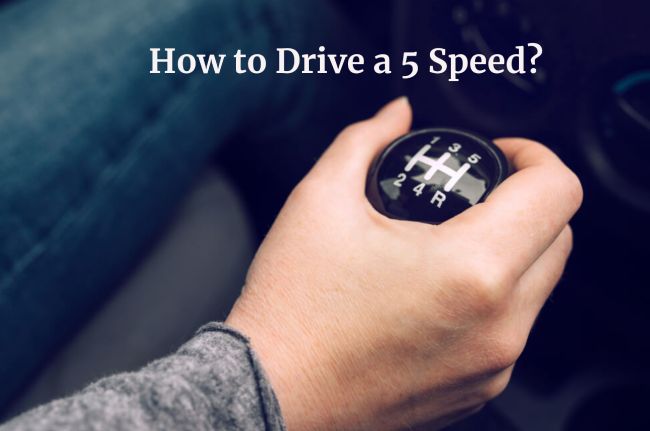Learning how to drive a 5 speed takes practice, patience, and a great sense of humor. To learn this useful skill, it’s important to take the time you need, and a clear set of instructions can also be helpful.
Understanding a Manual Transmission
It might be helpful to understand the function of a manual transmission before you start driving a stick. While you’re learning how to use a stick shift, it can be helpful to have some background information.
There is probably a tachometer on your vehicle. The RPM gauge shows how many times your engine cranks in a 60-second period. High RPMs generally mean more horsepower, but the tachometer also shows a scary-looking red area.
Informally, the red area on the tachometer is called the “red line.” When the needle reaches the red line, continuing to accelerate without shifting gears can be dangerous. Here’s where you come in.
Your tachometer will tell you when it’s time to shift long before it reaches the red. At this point, your car will be making a loud roaring noise, and your instincts will tell you it’s time to change gears.

How to Drive a 5 Speed Transmission
If you want to practice driving a 5-speed, it’s best to do so in an open area, such as a large parking lot. When you don’t have to worry about hitting any obstacles, it’s easier to learn to shift.
- Sit in the driver’s seat and engage the clutch. Practice slowly depressing and releasing the clutch to get the feel for it.
- Be sure to keep one foot on the brake. Turn the key in the ignition while holding the clutch in. Before a manual car can be started, the clutch must be engaged.
- Keeping the clutch pedal depressed, move the gear shifter to the left and up until you reach first gear. When you find the right gear, you’ll feel the shifter move into place.
- After taking your foot off the brake, slowly release the clutch pedal while simultaneously stepping lightly on the gas pedal. It takes some practice to master this part. The car may lurch forward or stall out at first, but after a few tries, you’ll learn the proper balance between clutch and gas. A good rule of thumb is to keep the RPMs around 2,000.
- As soon as you get moving, it will be time to switch to second gear. Your tachometer needle will be somewhere around 3,000 RPM when the engine revs a little higher. By pulling straight down from first gear, remove your foot from the gas pedal, engage the clutch, and shift into second gear. As you ease off the clutch, step on the gas.
- Shift through the gears as shown in the diagram on your gearshift. Since you can’t go fast enough in a parking lot, you’ll need to practice the higher gears on the road.
- Downshifting will help you slow down if you need to. The same process as shifting up will be followed, but you will also use the brake pedal to slow the car down to about 2,000 RPM. You will then release the clutch, shift to a lower gear, and push in the clutch again. If necessary, add an additional break.
Time to Stop?
In a manual car, stopping completely can be a little more difficult. You will stall your car if you simply step on the brake. As soon as you come to a stop, make sure your car is in neutral. Then, step on the brake while pushing the clutch pedal. Your foot should be off the clutch as you move the gear shifter into neutral. Until your car comes to a complete stop, keep stepping on the brake.
This Little Octopus Sucks Away Blackheads
Korean beauty product enthusiasts swear by this little black octopus for fighting blackheads.
FIND ON AMAZON
Helpful Tips
It might be easier to learn how to drive a 5 speed if you keep these things in mind. By reading up on the subject, you’re already on the right track, and with a little practice, you’ll soon be able to do it.
- A friend with experience is always a good idea to sit next to you and offer advice. If you are driving someone’s car, make sure it’s not someone who owns the car. That might cause some tension.
- Put your foot off the gas pedal when you’re shifting gears. Pushing the clutch will cause a loud roaring noise if you forget.
- When you’re learning to drive a stick, don’t start your car on a hill. Take some time to practice on hills once you’ve mastered the basics.
- To back up, simply shift into reverse and follow the same procedure as starting in first gear. You can move the gearshift into reverse by finding the R on your gearshift.
- When learning to drive a car for the first time, practice on an automatic transmission before learning to shift a manual.
It is useful to be able to drive a manual transmission. You won’t have to worry about borrowing someone’s car or driving a manual transmission if an emergency arises when you feel comfortable driving a stick. Driving a stick shift will become second nature with practice.
